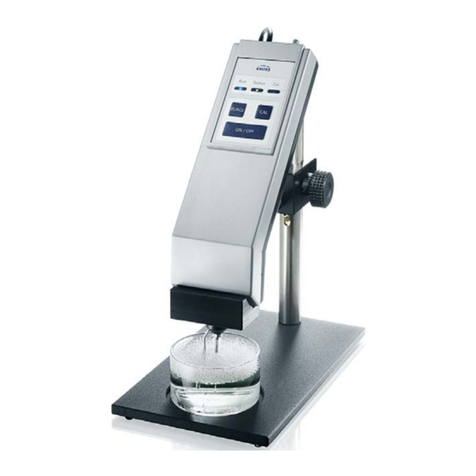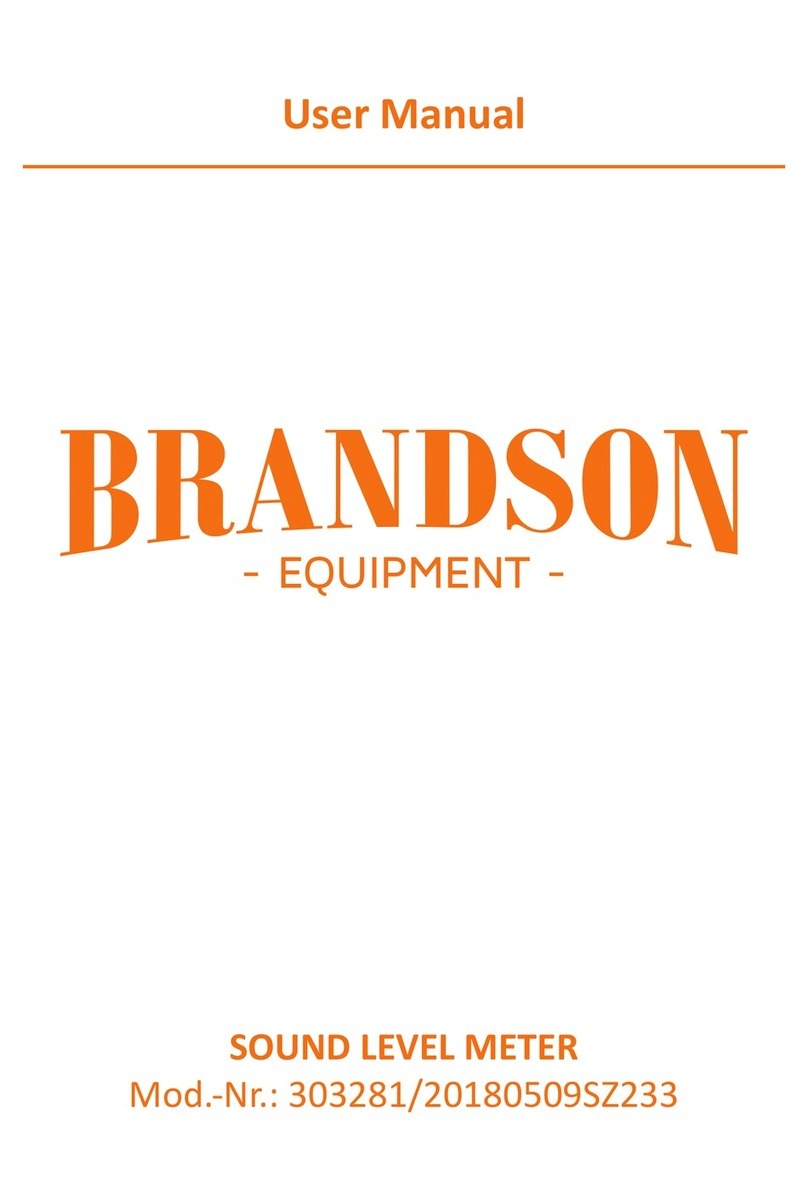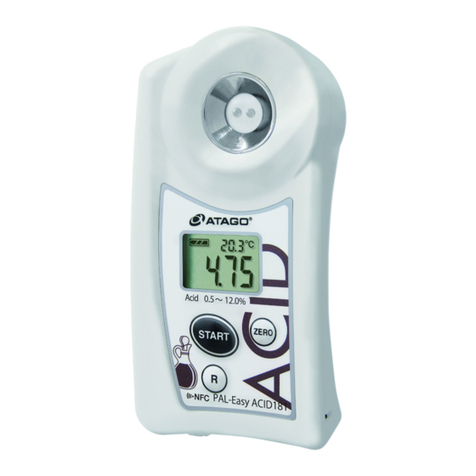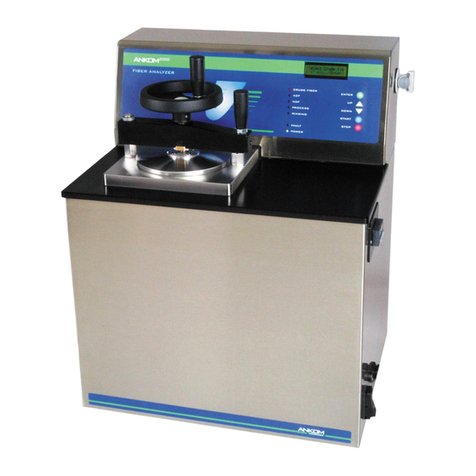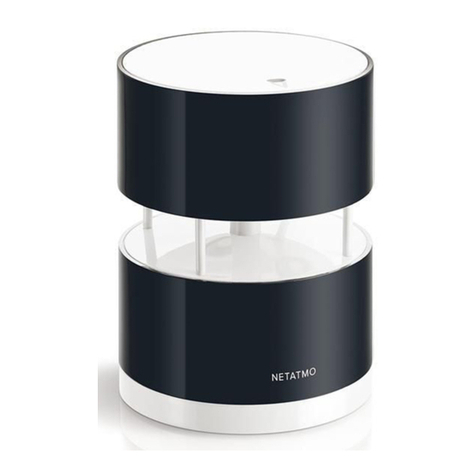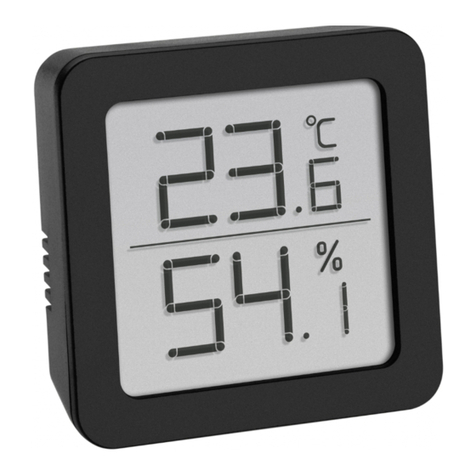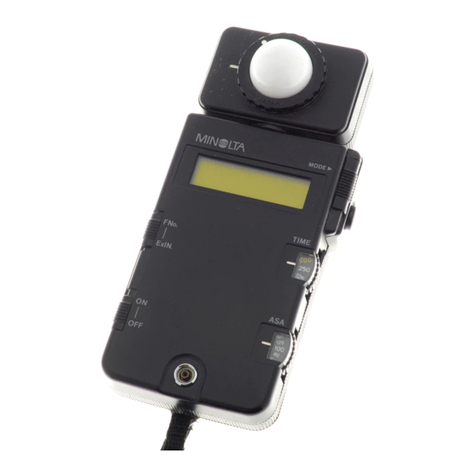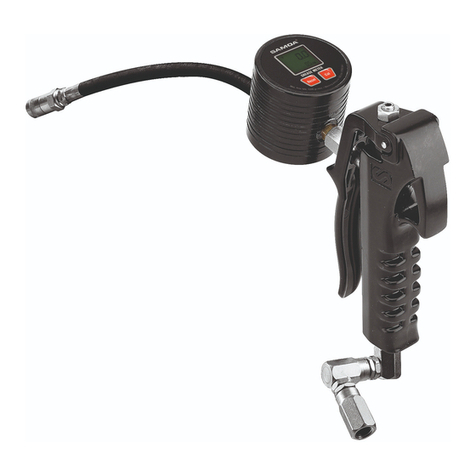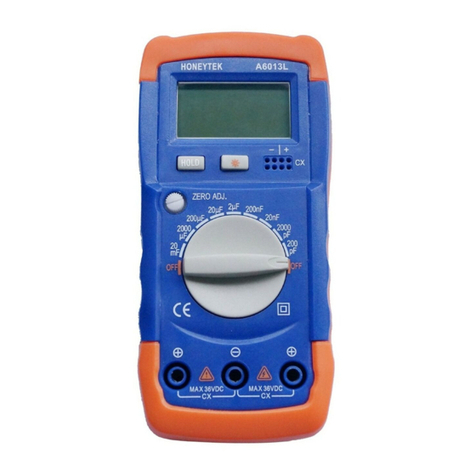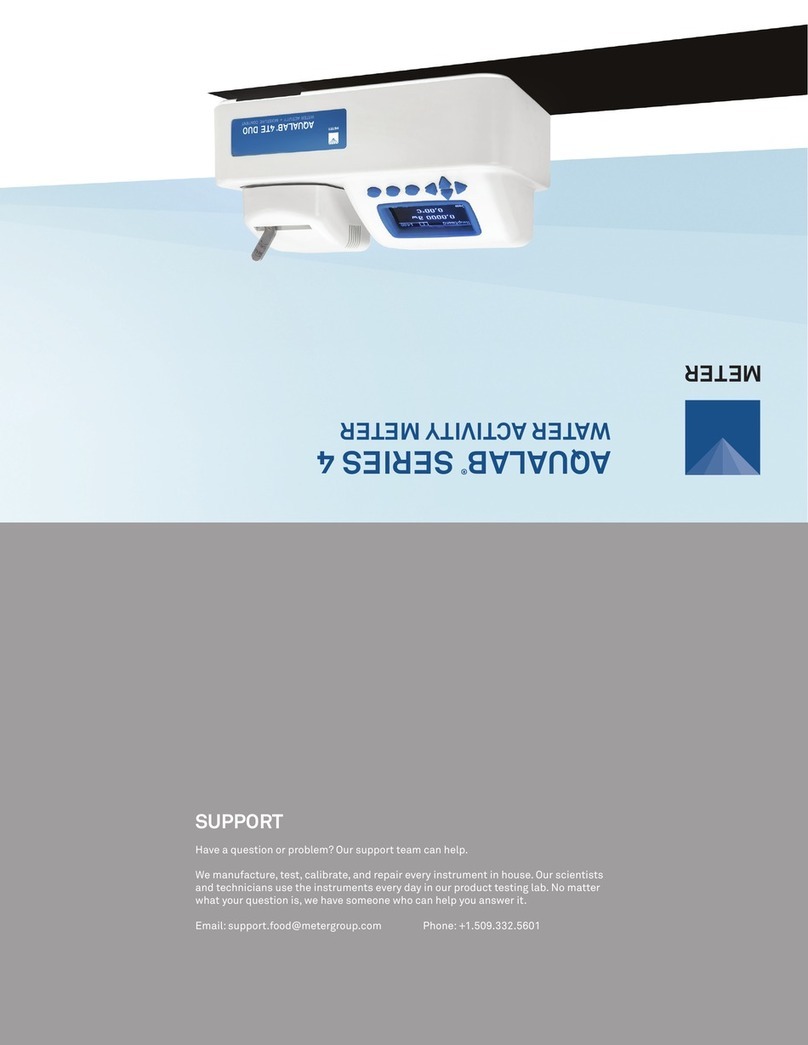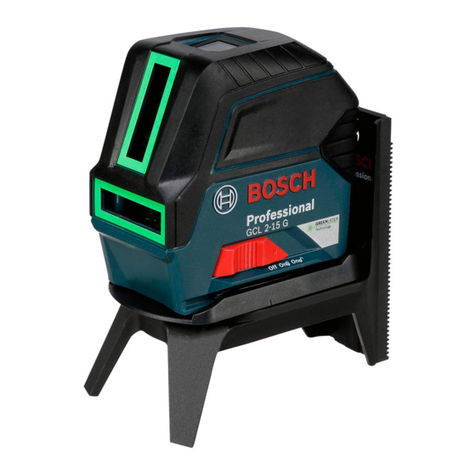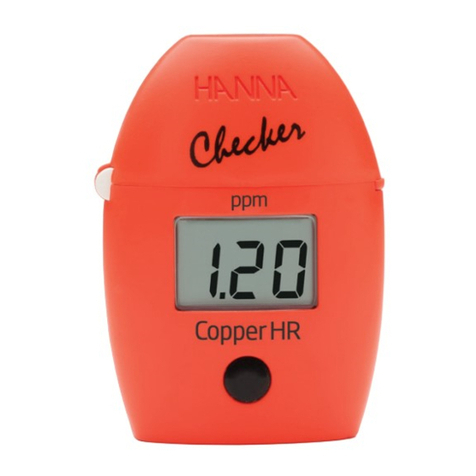kruss P3000 User manual

www.kruess.com
innovation since 1796
Polarimeter
P3000
User Manual


1
Table of Contents
Chapter - 1 Introduction ................................................................................... 5
1.1 Application Examples ..................................................................... 5
1.2 Reading Information....................................................................... 6
Chapter - 2 General Safety Instructions............................................................ 7
Chapter - 3 Instrument Description................................................................... 9
3.1 Scope of Delivery............................................................................ 9
3.2 Optional Accessories...................................................................... 9
3.3 Required Reagents ......................................................................... 9
Calibration.................................................................................. 9
Accuracy Check........................................................................... 9
Sample Dilution ........................................................................... 9
3.4 Instrument Images ........................................................................10
Instrument Front View of P3000 .................................................. 10
Instrument Back View of P3000 ................................................... 10
Polarimeter Tubes ...................................................................... 10
3.5 Screen Descriptions ...................................................................... 11
Main Menu ............................................................................... 11
Explanation of Buttons ................................................................ 11
Explanation of Display Window ................................................... 12
3.6 Measurement Principle..................................................................13
Chapter - 4 Basic Operation.............................................................................14
4.1 Buttons .........................................................................................14
4.2 Defining the System Settings ........................................................16
4.3 Defining the Instrument Settings...................................................17
4.4 Performing the Calibrations.......................................................... 18
Chapter - 5 Initial Startup................................................................................19
5.1 Installation....................................................................................19
Choosing a Suitable Location ..................................................... 19
Connecting a Printer .................................................................. 19

2
Connecting the Polarimeter to the Power Supply ........................... 19
5.2 Preparing the Instrument after Installation...................................20
Switching on the Instrument ........................................................ 20
Switching on the Printer .............................................................. 20
Connecting the Temperature Sensor ............................................ 21
Calibrating the Temperature Sensor ............................................ 21
Checking (Validating) the Instrument............................................ 22
Chapter - 6 Routine Operation ........................................................................26
6.1 Preparing the Instrument..............................................................26
Switching on the Instrument ........................................................ 26
Changing the Instrument Parameters ........................................... 27
6.2 Executing a Measurement.............................................................29
Determining the Blank ................................................................ 29
Resetting the Blank..................................................................... 30
Supplying a Sample ................................................................... 30
Connecting a Temperature Sensor .............................................. 30
Starting the Measurement ........................................................... 31
Measurement ............................................................................ 31
After Measurement..................................................................... 31
6.3 Measurement Results...................................................................32
Measurement Result Display ....................................................... 32
Printing the Displayed Measurement Result................................... 32
Switching off the Instrument ........................................................ 32
Chapter - 7 Settings ....................................................................................... 33
7.1 System Settings ........................................................................... 33
Opening the Menu .................................................................... 33
Explanations.............................................................................. 34
Switching the Printer on and off ................................................... 35
Selecting the Language .............................................................. 36
Input of Date and Time .............................................................. 37
7.2 Instrument Settings......................................................................38
Opening the Menu .................................................................... 38
Explanations.............................................................................. 39
Selecting the Scale ..................................................................... 40
Selecting the Weighted Sugar Sample.......................................... 40
Selecting the Polarimeter Tube .................................................... 42
Selecting the Temperature .......................................................... 43

3
7.3 Calibrating the Measurement Range............................................. 44
Opening the Menu .................................................................... 44
Canceling the Calibration........................................................... 45
Resetting the Calibration............................................................. 46
Performing the Calibration.......................................................... 46
Blank Measurement ................................................................... 46
Input of the Quartz Standard....................................................... 46
Input of the Quartz Temperature ................................................. 48
Measuring the Quartz Standard .................................................. 49
Accepting the Calibration ........................................................... 49
Rejecting the Calibration ............................................................ 50
7.4 Calibrating the Temperature Sensor ..............................................51
Prerequisites .............................................................................. 51
Calling the Function ................................................................... 51
Measuring the Temperature ........................................................ 52
Input of the Thermometer Temperature ........................................ 53
7.5 Blank............................................................................................ 56
Calling the Blank Function.......................................................... 56
Resetting the Blank ..................................................................... 57
Measuring the Blank .................................................................. 57
Saving the New Blank................................................................. 58
Rejecting the New Blank ............................................................. 58
Chapter - 8 Maintenance, Care & Inspection................................................... 59
8.1 Regular Maintenance and Care ..................................................... 59
Daily......................................................................................... 59
Weekly...................................................................................... 59
Yearly ....................................................................................... 59
When necessary......................................................................... 59
8.2 Changing the Fuse........................................................................ 60
8.3 Maintenance by Service................................................................ 60
Chapter - 9 Troubleshooting Table ................................................................. 61
Chapter - 10 Transport, Storage and Disposal .................................................. 62
Transport .................................................................................. 62
Storage ..................................................................................... 62
Disposal.................................................................................... 62
Chapter - 11 Appendix...................................................................................... 63

Chapter - 1 Introduction / 1.1 Application Examples
5
Chapter - 1 Introduction
The Polarimeter P3000 is very easy to operate and is designed for the fully automated
measurement of optical rotation.
The measurement sample is filled into the polarimeter tube, inserted into the sample
chamber and measured. The results are shown on the display and, if connected, printed
out on a printer.
The operator dialog is available in German and English.
1.1 Application Examples
Application areas for the polarimeter are, amongst
others:
•
Pharmaceutical Industry
Monitoring of chemical processes
Purity control and determination of
concentrations
Testing of substances listed in the German
Pharmacopoeia (DAB)
•
Chemical Industry
Purity control and determination of
concentrations
Analysis of optically active components
(qualitative und quantitative)
Determination of configuration changes
Monitoring of chemical processes
•
Food Industry
Determination of concentrations
Purity control
Quality control
•
Sugar and Sweetener-Industry
Quality control of raw materials and end
products
Determination of fructose and glucose
•
Cosmetic Industry
•
Beverage Industry / Breweries

Chapter - 1 Introduction / 1.2 Reading Information
6
1.2 Reading Information
Although instrument operation of the P3000 is easy, we recommend attentive reading of
this manual to ensure correct and optimal use of all functions.
Symbols This manual uses the following symbols:
•
Listings
Instructions to do something
Text in italics refers to text in dialog windows.
Reference to further information in this manual.
Finding Information
•
Look up in the table of contents.
•
Should a problem occur, refer to Chapter - 9
Troubleshooting Table

Chapter - 2 General Safety Instructions
7
Chapter - 2 General Safety Instructions
Hazards during normal specified operation:
Danger!
Electric shock by damaged instrument or power cable.
Before switching on the instrument, make sure that
the instrument and the power cable are
undamaged.
Only operate instruments that have been properly
installed and maintained.
Danger!
Electric shock by entering liquids.
Before cleaning, switch off the instrument and
disconnect the power supply.
Do not allow liquids to enter the instrument.
Do not spray the instrument for cleaning.
Make sure the instrument is completely dry before
connecting to the power supply.
Danger!
Electric shock
Before changing the fuse, switch off the instrument
and disconnect the power cable.
Warning!
Damage to the retina by the LED light source.
Do not look directly into the LED light source.
Careful!
Danger of pinching your hand.
Close the sample chamber lid carefully.

Chapter - 2 General Safety Instructions
8
Careful!
Damage to electrical components by condensate
formation.
Wait at least one hour after transporting the
instrument in a cooler environment (e.g. cold room
or outdoors) before connecting to the power
supply.
Careful!
Overheating damage.
Do not place the instrument near a heat source
(e.g. heating).
Do not expose to direct sunlight.
Allow for unhindered air circulation.
Attention!
Aggressive chemicals may damage the instrument's
paint or the plastic housing!
Clean the instrument with neutral cleaning agents
only.
DO NOT use aggressive chemicals for cleaning,
such as strong or weak acids or bases, acetone,
formaldehyde, chlorinated hydrocarbons or
phenols.
If the instrument comes into contact with aggressive
chemicals, clean immediately with a neutral
cleaning agent.

Chapter - 3 Instrument Description / 3.1 Scope of Delivery
9
Chapter - 3 Instrument Description
This chapter describes the following topics:
•
Scope of delivery
•
Optional accessories
•
Instrument images
•
Required reagents
•
Screen description
•
Measurement principle
3.1 Scope of Delivery
The following items are included in the delivery of the polarimeters P3000:
•
Polarimeter P3000
•
Power cable
•
Touchscreen pen
•
Polarimeter tubes:
1 x 100 mm glass tube with middle funnel
1 x 200 mm glass tube with middle funnel
•
User manual
3.2 Optional Accessories
•
Printer
•
various polarimeter tubes
3.3 Required Reagents
Calibration For calibration of the instrument, quartz standards are
used.
See Ordering Information.
Accuracy Check For checking the accuracy of the instrument's
measurements you may use:
•
Quartz standards
•
Standard solutions with known concentrations
Sample Dilution The solution used for sample dilution depends on the
sample material to be measured and should not itself
be optically active.

Chapter - 3 Instrument Description / 3.4 Instrument Images
10
3.4 Instrument Images
Instrument Front View of
P3000
Sample chamber port
Touchscreen user interface
Instrument Back View of
P3000
The P3000 provides the following connections:
•
Printer connection (for direct result output)
•
Power supply connection with power switch and
fuse
Power switch & fuse &
power supply connection
Printer connection
(serial interface)
Polarimeter Tubes The polarimeter tube is available in two different
lengths:
•
100 mm
•
200 mm
•
various other types optionally available

Chapter - 3 Instrument Description / 3.5 Screen Descriptions
11
3.5 Screen Descriptions
This chapter briefly describes the following screens of the polarimeter P3000:
Main Menu In the main menu the measurements are started and
the results are displayed. The buttons lead to further
submenus.
Display window for results, unit, blank as well as
instrument and system settings.
Operation of buttons via touchscreen.
Explanation of Buttons
Opens the menus for :
•
System settings
•
Instrument settings
•
Calibration (measurement range,
temperature sensor)
•
Blank
Provides the following information:
•
Instrument and firmware settings
•
Date of last calibration
•
Version of user interface and data
base

Chapter - 3 Instrument Description / 3.5 Screen Descriptions
12
Prints the result shown on the display.
Starts the measurement.
Explanation of Display
Window
11.000 °Z
Measurement result of the sample with
unit.
Blank Blank used for calculation of the sample
result.
Connected printer is switched on.
The motor is switched on.
No display: motor is switched off. It
switches off automatically a few seconds
after the measurement.
The temperature
sensor is connected to the
sample polarimeter tube and the
measured temperature during sample
measurement is 20.0 °C in this example.
Explanations: see Chapter 7.4 Calibrating the
Temperature Sensor.
No temperature display: no temperature
sensor connected.
Size of the employed polarimeter tube.
Is selected in the instrument settings.
Selected wavelength (fixed setting).

Chapter - 3 Instrument Description / 3.6 Measurement Principle
13
3.6 Measurement Principle
The polarimeter measures the optical rotation of the orientation of plane-polarized light
caused by optically active substances. In principle, it consists of two polarization filters,
the polarizer and the analyzer, each of which allows only a certain orientation of plane-
polarized light to pass through.
The polarimeter measures the optical activity or the optical rotation of a chemical
substance.
The following equation defines the relation between the optical rotation, the specific
rotation and the sample concentration:
c = concentration [g/l]
α= measured optical rotation [°]
l= tube length [dm]
[α]T= specific rotation, dependent on temperature (°C) and wavelength
The optical rotation is, amongst others, dependent on the following parameters:
•Type of sample
•Concentration of the optically active components
•Light wavelength
•Temperature of sample
•Tube length

Chapter - 4 Basic Operation / 4.1 Buttons
14
Chapter - 4 Basic Operation
The instrument is operated by a touchscreen display using four touchscreen buttons.
4.1 Buttons
Operation of the polarimeter is performed using these
four buttons:
Opens the submenus for :
•
System settings (printer, language, date/time)
•
Instrument settings (scale, polarimeter tube,
temperature)
•
Calibration (measurement range, temperature
sensor)
•
Blank
Returns to the main menu.
Selection of desired settings (system settings,
instrument settings, instrument calibration,
blank).
Opens the menu, e.g. for system settings.

Chapter - 4 Basic Operation / 4.1 Buttons
15
Opens the wiindow with the following information
about the P3000:
•
Instrument and firmware settings.
•
Date of last calibration.
•
Version of the user interface and data base.
Returns to the main menu.
Page up and page down in the
information pages.
Prints the result shown in the display.
Starts the measurement.

Chapter - 4 Basic Operation / 4.2 Defining the System Settings
16
4.2 Defining the System Settings
and
Switching between the parameters:
•
Printer,
•
Language,
•
Day, Month, Year, Hour, Min, Sec.
Selection of the desired setting:
•
on/off (printer)
•
German/English (language)
•
Date/time:
Counts up the respective selected
parameter (Day, Month, Year, Hour,
Min, Sec).
Accepts the set values and returns to the
main menu.

Chapter - 4 Basic Operation / 4.3 Defining the Instrument Settings
17
4.3 Defining the Instrument Settings
Selection of parameters (scale, polarimeter
tube, temperature).
Selection of parameter setting.
Accepts the set values and returns to the
main menu.

Chapter - 4 Basic Operation / 4.4 Performing the Calibrations
18
4.4 Performing the Calibrations
The functions for performing the calibrations of the measurement range and the
temperatue sensor are accessed using the button Calibration.
Performing the calibrations see Chapter 7.4 Calibrating the Temperature Sensor.
Selection of calibration functions
(measurement range and temperature
sensor).
Returns to the settings menu.
Accepts the set values and returns to the
main menu.
Table of contents
Other kruss Measuring Instrument manuals
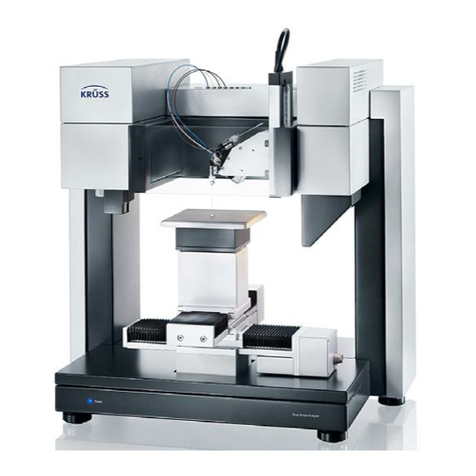
kruss
kruss DSA100 User manual

kruss
kruss DR301-95 User manual
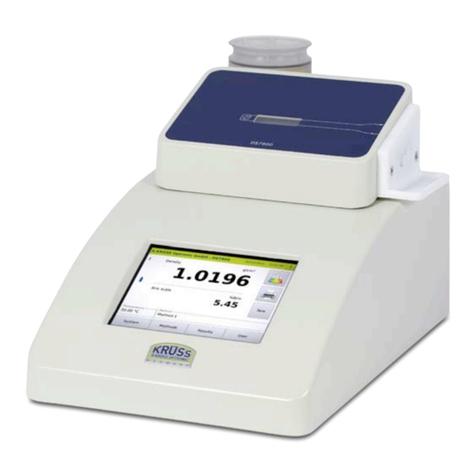
kruss
kruss DS7000 Series User manual
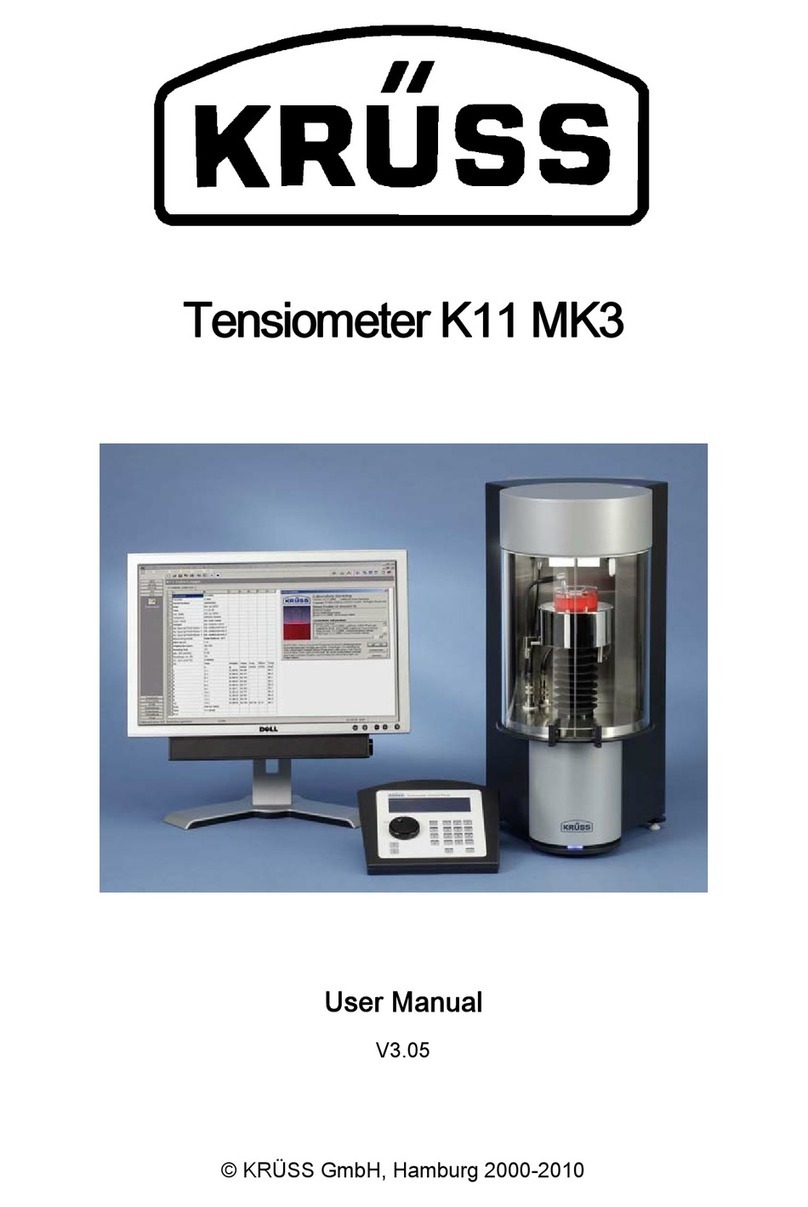
kruss
kruss K11 MK3 User manual

kruss
kruss DR101-60 User manual

kruss
kruss DR201-95 User manual

kruss
kruss Mobile Surface Analyzer User manual
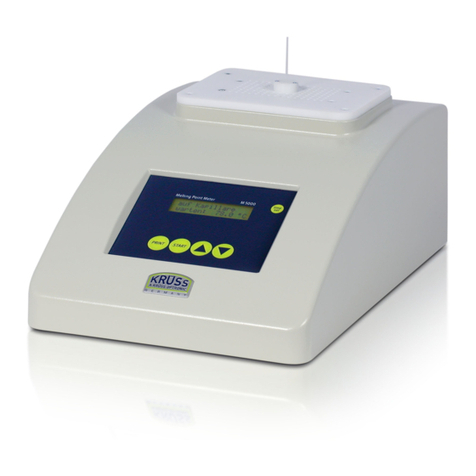
kruss
kruss M5000 User manual

kruss
kruss M3000 User manual

kruss
kruss M5000 User manual
Popular Measuring Instrument manuals by other brands
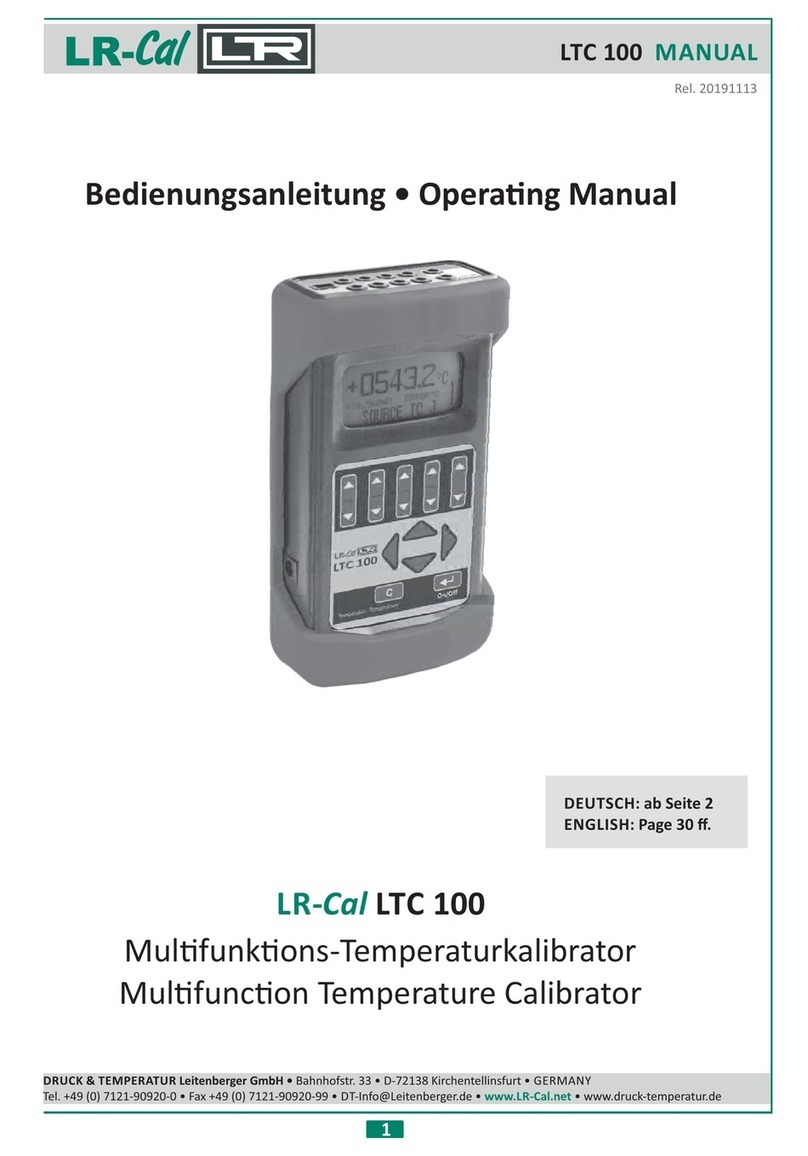
DRUCK & TEMPERATUR Leitenberger
DRUCK & TEMPERATUR Leitenberger LR-Cal LTC 100 manual
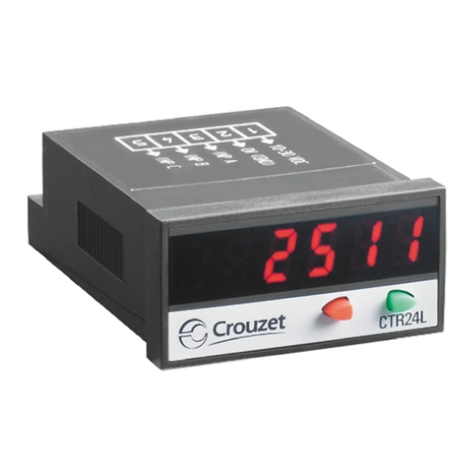
Crouzet
Crouzet CTR24L-2513 operating instructions
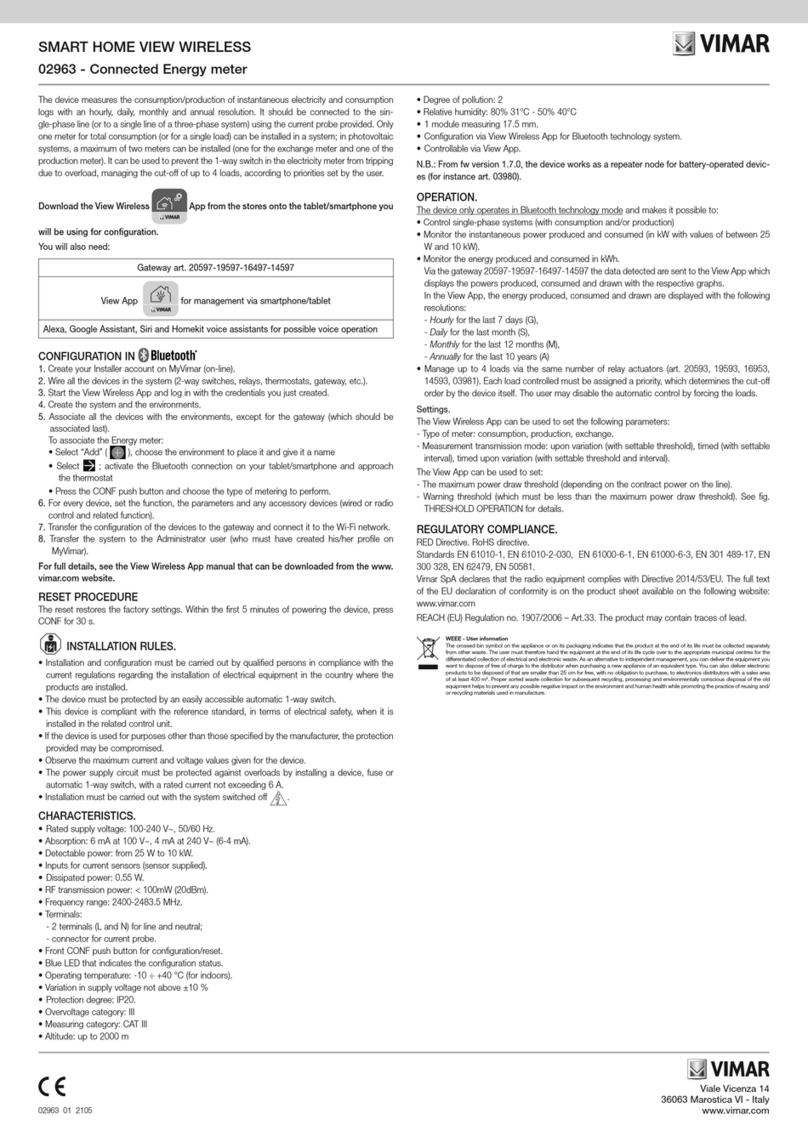
Vimar
Vimar 02963 quick start guide
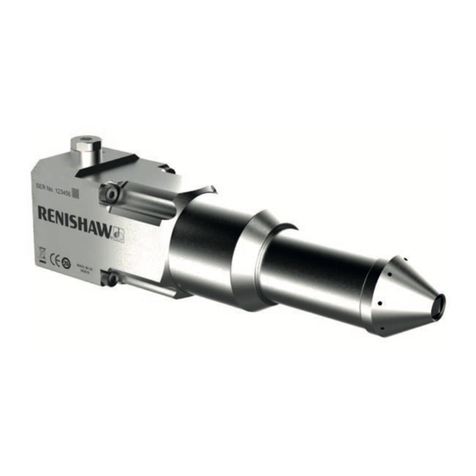
Renishaw
Renishaw APCA Series Installation and user guide
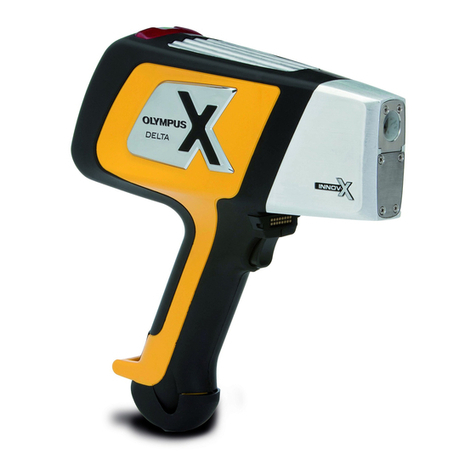
Olympus
Olympus DELTA 50 quick start guide
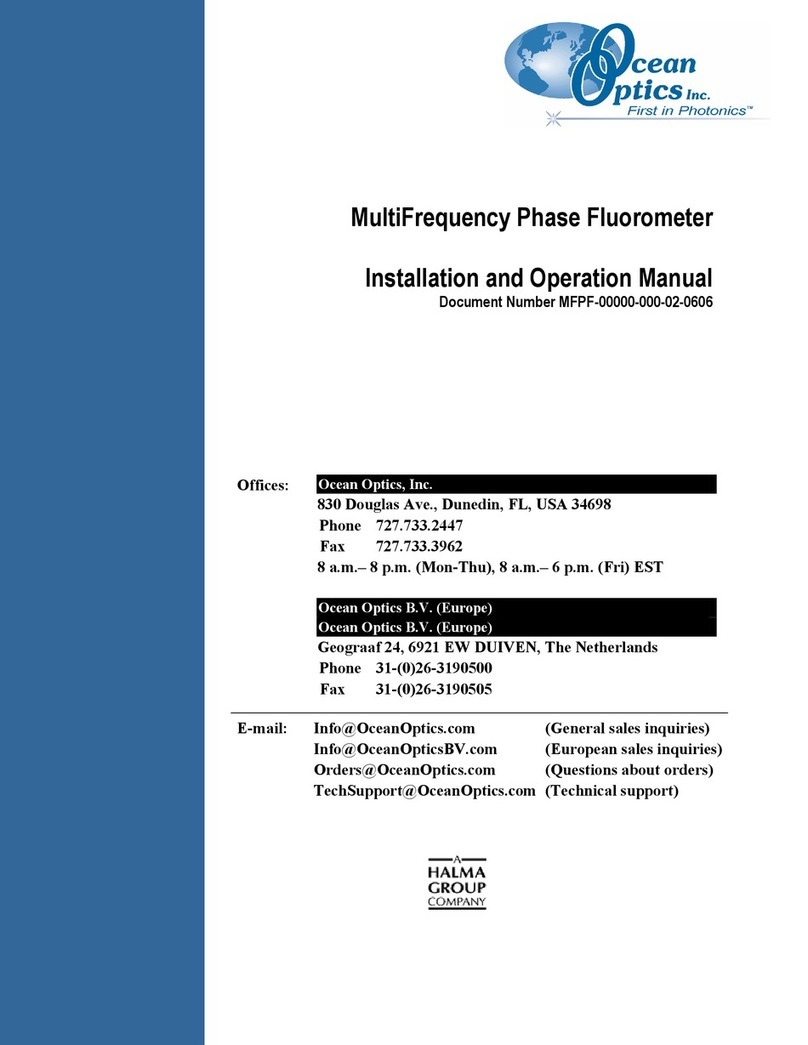
Ocean Optics
Ocean Optics MFPF100-1 Installation and operation manual

